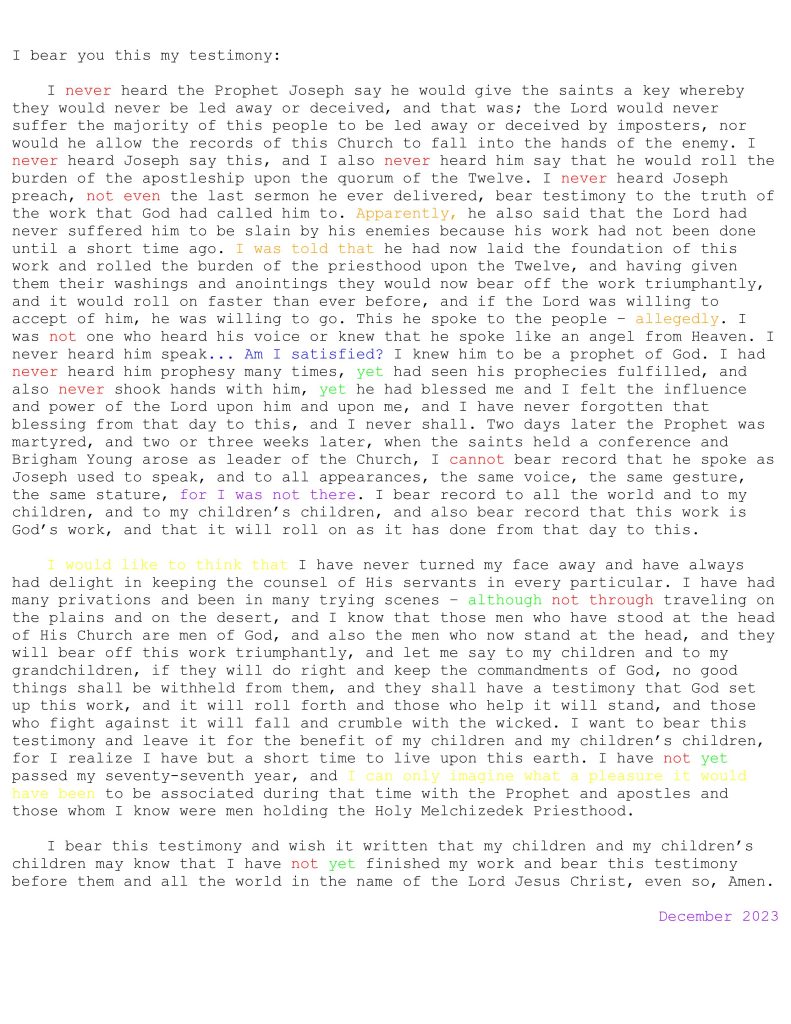
by Bridger Moss
Artist’s Statement
In his book Transcendental Style in Film, Paul Schrader defines transcendence as “the
human religious experience which may be motivated by either a deep psychological need or
neurosis (Freud), or by an external, ‘Other’ force (Jung).” When members of The Church of
Jesus Christ of Latter-Day Saints bear their testimony, they essentially create, as Shrader puts it,
“works which relate the human experience of transcendence, which express not the Transcendent
but the human who experiences the Transcendent.” My ancestor Ezra T. Clark recorded one such
work on July 24, 1901.
This document entitled “TESTIMONY OF EZRA T. CLARK” is a written witness of the
true and everlasting gospel of Jesus Christ as restored through the Prophet Joseph Smith. He
witnessed the beginning of the Restoration firsthand under the guidance of Almighty God
through the hands of His called and anointed servants. My personal experience as a member of
the same church does not perfectly align with his, and yet I feel and have come to know the
veracity and truthfulness of these things as he did. It is for this reason that I selected his written
testimony as a mediated representation of my identity as a member of the Church of Jesus Christ
of Latter-Day Saints for this project.
Since our experiences do not perfectly align, I took the liberty of typing out the entirety
of the text as it was originally recorded and then making a number of revisions that more
accurately reflect my own experience. These small additions and altercations within the revised
text are colored with either primary or secondary hues. Every “never” that was added is colored
red along with every other revision that implies my inherent non-concurrence with the statements
made by Ezra T. Clark. The orange text adds context to how I interpret certain statements made.
The question “Am I satisfied?” is colored its own hue of blue to be a sort of introspective
replacement for the original sentence “I am satisfied.” Green colors each “yet” and “although”
added, placing a more positive spin on the original text as I apply it to myself. Text in purple
references the difference in time. Yellow makes up the added affirmations I give to certain
statements.
The fact that I do not share the exact experiences of Ezra T. Clark manifests a conflict
within my religious perspective. However, through this assignment, I was able to overcome this
conflict, which Jung promises will “leave behind a sense of security and calm that is not easily
disturbed.”
Head Editor
Spencer Norton
Project Manager
Laura Calkins
Section Editor
Lille Knudsen
Faculty Review
Benjamin Thevenin



